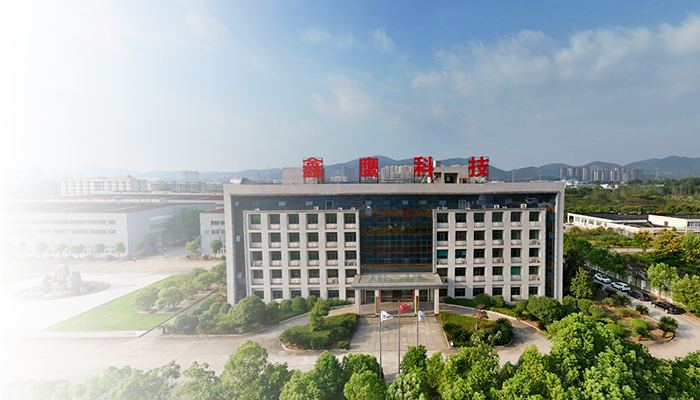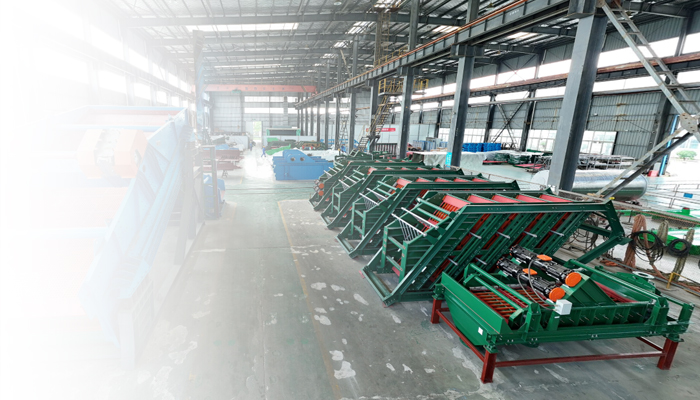Xinying Environmental Technology (Hubei) Co., Ltd. (referred to as Xinying Technology) is located in the Nonferrous Industrial Park of Huangjinshan Development Zone, Huangshi City, Hubei Province.

The leading products developed and produced by Xinying Technology include laminated high-frequency vibrating fine screens, anti blocking and wear-resistant polyester screens.

Stay informed of the latest news from Xinying Technology and we will be dedicated to serving you!

Strive to digitize the mining and beneficiation industry and achieve the great goal of "China's equipment, equipment for the world"!

Xinying Technology will adhere to the principle of "Technological upgrade, customer first, lifelong service" and take the company's listing and standardized operation as an opportunity.

尾矿干堆工艺是尾矿排放贮存方法的一大改进。利用专业设备处理尾矿浆,通过特定工艺实现固体物料与水的有效分离,干料运输至尾矿堆场贮存,水可以作为选矿回水利用。
优点:
安全性较湿排要好,大大降低了尾矿库运行面临的安全风险;
占地少、后续生产成本低;
可以开发原来不具备建设尾矿库条件的矿山;
对堆场要求的条件不苛刻,可利用废弃的采矿坑作为堆场;
回水利用率可达到80%以上,在严重缺水地区优势明显,可减少对环境的污染。
【应用领域】适于有色金属、黑色金属、非金属矿山选矿厂尾矿处理方案
【设备配置】砂泵、浓缩旋流器、脱水筛、高效浓缩机
New Tailings Dry Stacking Process
In response to some of the current problems in the application of tailings dry stacking technology, we aim to complement each other's strengths and weaknesses to achieve complete dry stacking of tailings. Based on the research of solid-liquid separation technology and equipment development and manufacturing, we comprehensively consider saving production costs. Through years of theoretical research and extensive experimental research, we have summarized a complete set of effective new processes for tailings treatment - narrow level graded dewatering tailings dry stacking process.
The biggest feature of this process is to first classify and organize the coarse and fine particles in the material, and use different dehydration equipment for the coarse and fine particle grades.
Short construction period, saving 80% of land acquisition and greatly reducing investment costs; Tailings slurry achieves solid-liquid separation, with a return water utilization rate of up to 80%, which is worth promoting in water scarce areas in the north.
The equipment used has the advantages of high efficiency, light weight, easy operation, and easy maintenance. The process design is compact, the layout is reasonable, and the process route is short. It is suitable for small and medium-sized beneficiation plants with a processing capacity of 1000-5000 tons/day.
[Process Details]
Xinying Company aims to address some of the current issues in the application of tailings dewatering and dry stacking technology, and to achieve complete dry stacking of tailings by learning from each other's strengths and weaknesses. Based on the research of solid-liquid separation technology and the development and manufacturing of equipment, Xinying Company comprehensively considers cost savings. Through years of theoretical research and extensive experimental research, it has summarized a new process for treating tailings - the narrow level grading and sorting tailings dewatering and dry stacking process, which combines cyclones, thickeners, dewatering screens, and filter presses to form a complete tailings dry discharge system (with multiple options to choose from), realizing the classification and grouping of coarse and fine particles, greatly improving the dewatering effect and treatment efficiency.
The biggest feature of this process is to first classify and process the coarse and fine particles in the material, and use different dewatering equipment for the coarse and fine particle grades. It is particularly suitable for the treatment of tailings from small and medium-sized beneficiation plants with a processing capacity of 1000-10000t/d. The system has a flexible process flow, provides multiple supporting solutions, high degree of automation, and good dehydration effect.
Option 1: Cyclone (+thickener)+dewatering screen. After the tailings are concentrated by the cyclone, the overflow can enter the thickener for concentration, and the bottom flow can enter the linear vibration dewatering screen for dewatering, which can keep the moisture content of the tailings within 18% and achieve the goal of dry discharge and stacking of tailings. This method is suitable for the dry discharge of medium and coarse tailings, with the characteristics of simple process, low investment, small footprint, low operating cost, and high efficiency.
Option 2: Thickener+filter press. After being concentrated by the thickener, it enters the filter press to obtain dry material with a moisture content of less than 20%. This scheme is suitable for the dry discharge of fine-grained tailings, with a simple process, low investment, and simple maintenance.
Plan 3: Cyclone+Thickener+Dehydration Screen+Filter Press. After the tailings are concentrated by the cyclone, they overflow into the thickener, and then enter the filter press after concentration to obtain fine-grained dry discharge products; The bottom flow of the cyclone directly enters the linear vibration dewatering screen, and the undersized product returns to the cyclone, while the undersized product is the coarse particle level dry discharge product. This method enables the classification and grouping of coarse and fine particles, using different dewatering equipment to ensure good dewatering effect. It is suitable for the dry discharge of tailings of various particle sizes. This system operates stably, has a high degree of automation, a wide range of applications, and a large processing capacity. Coarse particle products can bring economic benefits.
[Technological advantages]
1. Small investment, small footprint, low operating costs, and high efficiency;
2. In production, solid-liquid automatic separation, fine sand can be reused as a resource, and liquid can be recycled as water, resulting in a high investment recovery rate;
3. Different schemes are adopted for different tailings, with good dewatering effect, smooth operation of tailings dry screening, easy operation, long service life of vulnerable parts, high degree of automation, and 24-hour continuous operation.
Production Line Flow Chart
